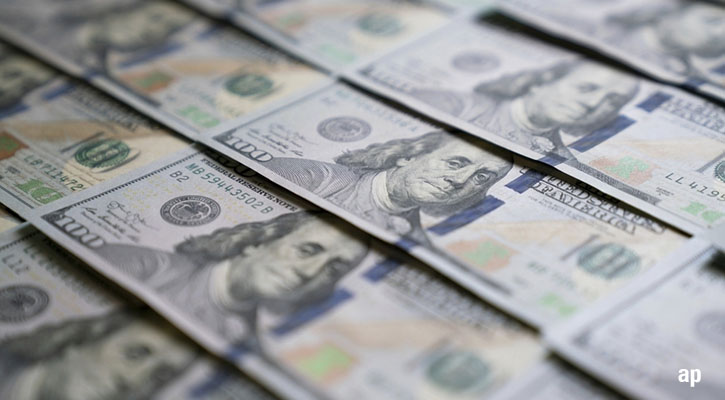
Over the past 15 years, several new investment terms have been coined, including 1) cryptocurrency (the word had existed, but not the asset itself), 2) nonfungible token, 2) special-purpose acquisition company, and 4) unicorn. Beware financial novelties! Of the quartet, only the latter has not been disgraced.
That is because, unlike the other three assets, unicorns are proven investments. Cryptocurrencies and NFTs are, in effect, newly minted collectibles. Inevitably they have been roiled by both fraud and fluctuating demand. And SPACs were never created to last, being mechanisms for transferring wealth from retail investors to institutions. Sooner or later, the public would refuse the invitation.
Unicorns are different. Their exotic name notwithstanding, they are in fact traditional investments, conferring equity ownership. Specifically, they refer to the shares of privately held, startup businesses that are valued above US$1 billion. Less colourfully, they can be described as late-stage venture capital companies.
Owning a claim on corporate cash flows distinguishes unicorns from their more troubled cousins. While cryptocurrencies and (except in rare cases) NFTs can never possess a claim on future income, and SPACs merely promise to make such an arrangement (after paying a steep buyers’ commission), investment unicorns automatically confer that benefit. They are, in effect, uncommon stock.
The Big Boom
As shown by the following chart, the investment-unicorn marketplace has ballooned. From 2016 through 2022, the number of global unicorns increased sixfold. Their total valuation grew even more rapidly. As a group, investment unicorns are now worth more than the publicly traded companies of any country, save for the United States, China, and Japan. It’s a very large marketplace.
Global Unicorn Growth
:quality(80)/cloudfront-us-east-1.images.arcpublishing.com/morningstar/L6ZHZG7XMFGDRLLR4O4TV3D5Y4.png)
Two factors underlie their expansion. First, the public stock market’s rising tide floated all boats. During that period, global equities (led by the United States) gained 150%. Even if the private marketplace had not changed, hundreds of new unicorns would have been born. When publicly traded securities rally so sharply, their private counterparts inevitably also grow more valuable.
Second, today’s private businesses are in less of a hurry to access the public markets than were their predecessors. The U.S. JOBS Act of 2012 broadened the capital bases of private companies, by raising from 500 to 2,000 their permitted number of shareholders, Venture capitalists have provided additional financing, thanks to record-breaking funding that swelled their coffers. So, too, have mutual funds, which are investing more heavily in private companies than ever before.
All this has led to a much-discussed “confluence" of public and private markets, which largely describes the territory occupied by investment unicorns, as they have achieved the size that traditionally has been associated with public firms. (The other major source of the confluence is the expansion in private debt.) Two previously distinct marketplaces have, at least to some extent, merged.
Countries and Sectors
The trend is most evident in China. The U.S. accounts for half of all investment-unicorn assets, which is no great surprise, given that it composes a similar percentage of the world’s exchange-traded equities. Other countries also fall roughly in line with their public exposures. The main exception is China, which is home to 24% of unicorn assets—well above the country’s exchange-traded weighting.
Country Weightings
(As of June 30, 2023)
:quality(80)/cloudfront-us-east-1.images.arcpublishing.com/morningstar/H7UGZZTRJVBZNH4I2QCFH2INXQ.png)
This occurs because of a structural difference between Chinese financing and those of other major markets. In China, government and debt financing is more common than equity capital. Thus, although Chinese unicorns satisfy other aspects of the genre’s definition, by being relatively new organizations with net worths that exceed $1 billion, they may follow a different trajectory. If successful, unicorns elsewhere will eventually access public markets. In China, perhaps not.
Most unicorns sell technology. One fifth of unicorn assets are in companies devoted to artificial intelligence, with another 15% in financial technology and 12% in e-commerce businesses. Software services, telecommunications, and biotechnology are also well-represented.
Industry Weightings
(As of June 30, 2023)
:quality(80)/cloudfront-us-east-1.images.arcpublishing.com/morningstar/HCKRNLCDB5AK5HVJ65GO753U7U.png)
The industry mix, of course, is to be expected. Not only do the world’s venture capitalists greatly prefer companies that boast emerging technologies to, say, niche retailers or heavy manufacturers, but when such businesses do thrive, they really thrive. The quickest path to $1 billion is paved with technology.
What About Performance?
Which brings us to the thorniest unicorn issue: calculating their returns. Determining the total return on ex-unicorns is straightforward. Companies exit the designation in one of three ways: 1) through bankruptcy, 2) by being purchased by another company, or 3) by going public. In the first case, the return is negative 100%. In the second and third cases, it can easily be computed, by dividing either the purchase or IPO price by the investor’s cost. So far, so simple.
The tricky part is calculating how they perform while being a unicorn. Unless a new round of private financing sets a fresh price, valuing existing unicorns is a judgment call. In 2015, The Wall Street Journal raised waves by disclosing (based on Morningstar data) how widely fund prices of Uber UBER varied. Unicorn valuations have since tightened, with outliers moving to the middle by adjusting their estimates, but pricing investment unicorns remains an art as well as a science.
(Morningstar has its own approach, detailed in a white paper called “What Are Unicorns Worth?” The method consists of updating a company’s last reported deal term with the prices that subsequently were paid for comparable businesses, in both the private and publicly traded sectors. For more information on the composition and performances of these indexes, see the attached link.)
Investment Opportunities
Currently, unicorns are owned mainly by 1) their companies’ principals, 2) institutional investors, or 3) accredited investors (through private placements and/or hedge funds). Some mutual funds have begun to buy private equities. However, as their holdings are modest, few everyday shareholders have significant exposure to investment unicorns.
In response, private-equity firms have lobbied the US Department of Labor for permission to sell their wares directly to retirement account (401-K) participants. Few neutral observers care for that proposal; I am no exception. However, I do believe that target-date funds should be permitted to invest into privately held securities. After all, each of the six largest US publicly traded companies, save for Berkshire Hathaway BRK.A, were at one time during their existence unicorns.






:quality(80)/cloudfront-us-east-1.images.arcpublishing.com/morningstar/6ZMXY4RCRNEADPDWYQVTTWALWM.jpg)





.png)








